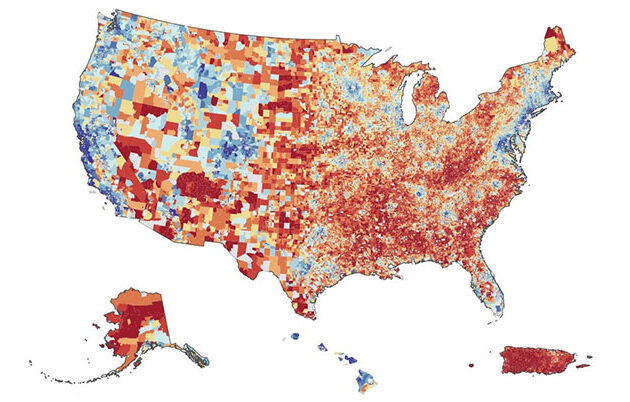For more than a decade, Rankings data, evidence, guidance and stories have broadened the nation’s understanding about the multiple factors that shape health.
This year, the analysis finds that counties with well-resourced civic infrastructure have higher rates of high school completion, higher household incomes, less income inequality and lower rates of children in poverty and uninsured adults, according to Sheri Johnson, principal investigator of County Health Rankings & Roadmaps and director of the University of Wisconsin Population Health Institute.
In these communities, people also tend to live longer, she said.
“Our findings reveal that people and places thrive when all residents have the chance to participate in their communities,” said Johnson, who is also a professor of population health sciences at the University of Wisconsin School of Medicine and Public Health. “History shows that we can remake systems and structures through civic participation that are beneficial to all.”
This year’s County Health Rankings looked at a series of factors to measure civic health infrastructure and participation in counties including access to parks, school funding adequacy, broadband, voter turnout and self-reported census participation.
“Wisconsin has a strong legacy of helping our neighbors. The County Health Rankings are a reminder that we need to recommit to this legacy. There are some Wisconsinites that have been left behind, and now is the time to come together to ensure every resident has the opportunity to be healthy and thrive. We look forward to partnering with leaders across the state to use the County Health Rankings’ resources to find strategies that strengthen Wisconsin communities,” said Paula Tran, state health officer and administrator with the Wisconsin Department of Health Services.
Improving civic health requires action
The Rankings offer several solutions to build civic health, including investing in libraries, community centers and other public spaces to encourage in-person connections; expanding civic knowledge and skills through youth leadership programs and implementing voter registration and turnout initiatives to expand representation in the democratic process. Voter participation is tied to better self-reported health.
In addition to these solutions, the program’s What Works for Health offers more than 400 evidence-informed strategies to help communities on their health improvement journeys. Each strategy is rated for its effectiveness and likely impact on health disparities. Additionally, the rankings website has improved features to make it more accessible. Data are now easier to find, use and understand with detailed descriptions that offer helpful context about counties with information such as links to identify the Indigenous nations native to the land.

